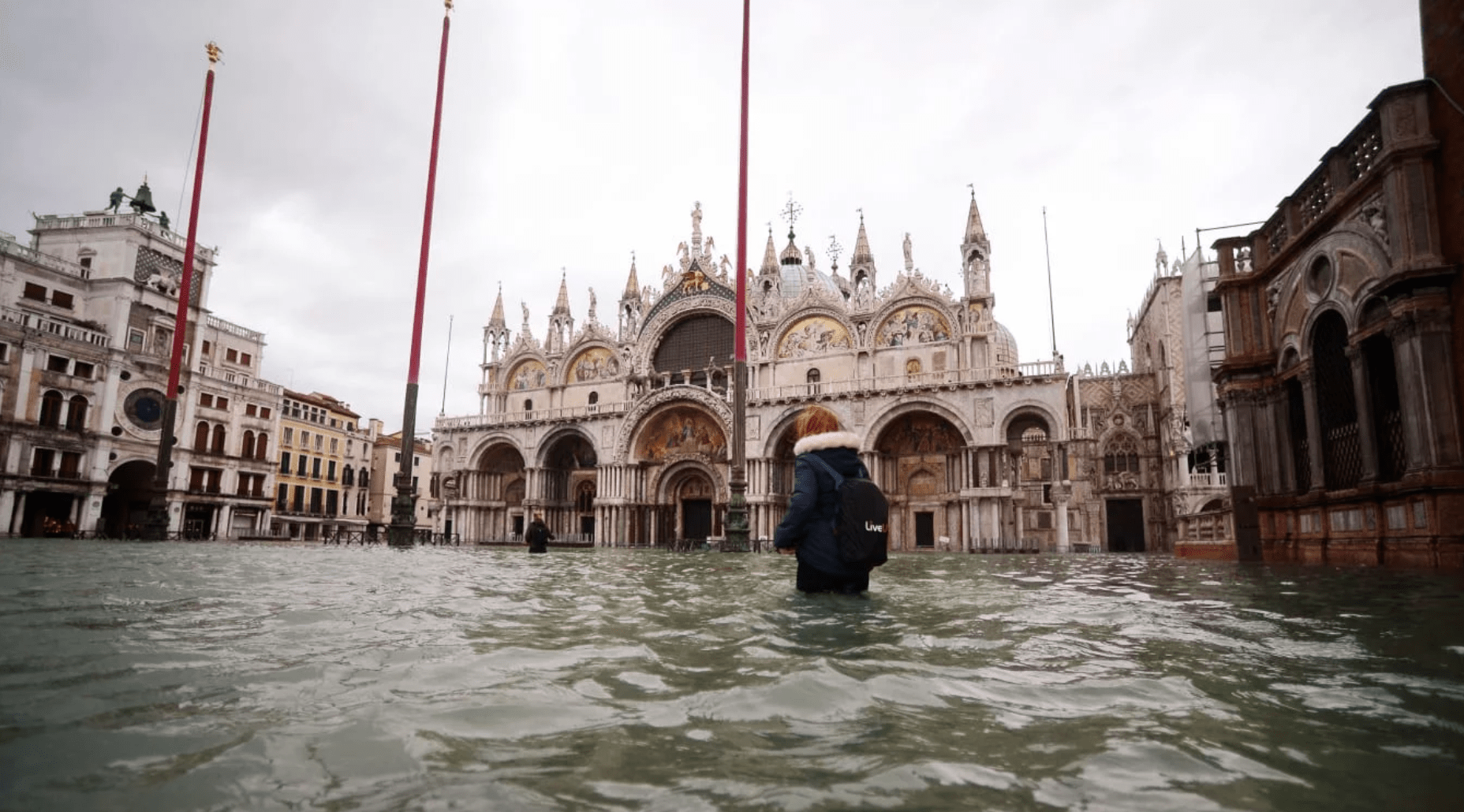Record-breaking flooding continues after historical high tides hit Venice.
Venice has been experiencing the worst flooding it has seen in decades this past week following the second highest tide ever recorded at 187 centimetres, leaving 85% of the city underwater. This is just short of the highest tide recorded at 194 centimetres in 1966.
This is nothing Venice has not seen before. The city frequently experiences tides of 140 centimetres in the winter months, events known as ‘acqua alta’ and it is not atypical to have a higher-than-average tide every 5 years or so. However, there is rising concern over these irregular high tides and extreme weather events, like the recent tide that hit Venice on the 12th of November this year, as Venice continues to subside or sink. The city is made up of 100 islands criss-crossed with canals within a lagoon in the Adriatic Sea which makes it very sensitive to flooding.
Scientists say that the city is sinking on an average of two millimetres per year due to shifting tectonic plates, a soft geological foundation and decades of pumping groundwater from the aquifer under the lagoon, which only stopped in the 70’s.
Rising sea levels as a result of climate change only puts Venice at greater risk of more frequent extreme flooding events. Recent studies have found that Venice could be underwater within 100 years if climate change continues at the rate it is currently going.
To equip the city with a way to deal with increasingly frequent high tides and flooding, the government of Venice has spent billions of euros on a flood-barrier system nicknamed MOSE that, once completed and operational, would encompass a steel gate system along three inlets in the lagoon that could be lifted during high tides to reduce or eliminate flooding events. The project began in 2003 and initially had a 2011 deadline but it is behind schedule and plagued by corruption and bribery. Now it is predicted the floodgates will be operational by 2021.
Two days after the flooding, Italy’s Prime Minister Giuseppe Conte declared a state of emergency. He promises to accelerate the building of the city’s structural defences and openly blames climate change for the intense and irregular flooding events. Five days after the initial flooding, another ‘acqua alta’ flooded the city, hitting records again at 1.5 metres above sea level, with 70% of the city left resubmerged.
Since records began in 1872, there has not been a single week when flood waters have reached 1.5 metres three times in the same week, at least until now. This marks the week of November 12th as the worst week of flooding the city has seen in over 50 years, with 3 of the top 10 worst floods to hit Venice occurring in the same 7-day period.
Yet Venice is not the only part of Italy to be faced with a weather emergency – the River Arno continues to surge at high levels in Pisa and Florence. From landslides derailing a train, to a snowstorm leaving 11,000 homes without power, to severe rain and winds requiring rescues of people all over the country, Italy has been experiencing widespread extreme weather events since flooding began on the 12th.
The flood waters are still yet to fully recede, damage to Venice’s historical sites is predicted to amount to millions of euros and Venetians are becoming fed up with the lack of defence the city has to these waters and its increasing vulnerability due to climate change. It may come across as ironic that on the same night as the initial flooding, councillors rejected amendments related to fighting the climate crisis. A green campaigner said, “there is no more meaningful image than a chamber being flooded, causing the representatives of the Venetian people to flee.”
image source: The Daily Beast

